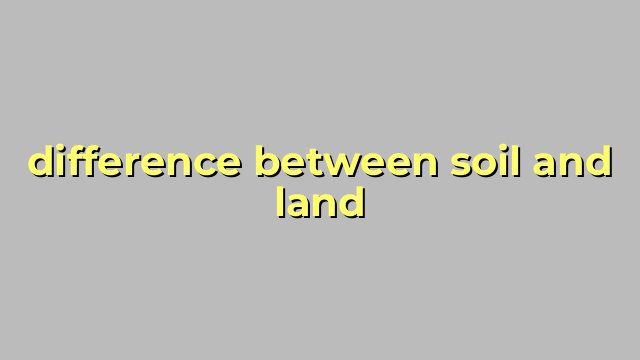Difference between Soil and Land
Soil and land are two different terms that are often used interchangeably. However, there is a significant difference between these two terms. Soil and land play a crucial role in agriculture and the overall environmental health of the planet.
What is Soil?
Soil is the top layer of the Earth’s surface that is composed of minerals, organic matter, water, air, and living organisms. Soil provides a medium for plant growth, filters water, and supports the Earth’s ecosystem. Soil varies in composition from one location to another and can be classified based on its texture, color, and pH level.
What is Land?
Land is a general term that refers to the Earth’s surface. It can be rocky, sandy, or covered in vegetation. Land can be used for different purposes such as agriculture, construction, and recreation. Landforms like mountains, valleys, and deserts are also part of the land.
The Differences Between Soil and Land
The main difference between soil and land is that soil is a part of land. Land is the Earth’s surface, while soil is a layer that covers the land. Soil is a living, breathing ecosystem that supports the growth of plants and provides habitat for living organisms. Land, on the other hand, is a physical place that can be covered in soil, water, or vegetation.
Another difference between soil and land is that soil is renewable, while land is not. Soil can be replenished through natural processes such as decomposition and erosion. However, once land is degraded or converted into a different use, it is difficult to rehabilitate it to its original state.
In conclusion, soil and land are two different terms that contribute to the overall health and sustainability of the planet. Understanding the differences between them is crucial for effective land management and sustainable agriculture practices.
Table difference between soil and land
| Soil | Land |
|---|---|
| Refers to the topmost layer of the Earth’s crust. | Refers to the surface of the Earth that includes soil, rocks, water bodies, vegetation, and other natural elements. |
| Consists of minerals, organic matter, water, and air. | Comprises various physical and biological components that determine its suitability for different purposes. |
| Affects plant growth and production. | Affects land use and management. |
| Can be analyzed based on its physical and chemical properties. | Can be categorized based on its geographical, ecological, and socio-economic characteristics. |
| Can be improved through soil management practices. | Can be managed through land use planning and conservation efforts. |


